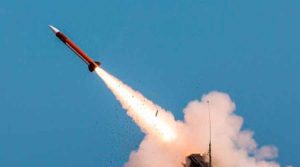Medieval Sword
Medieval swords were the primary weapon of the knights and foot soldiers during the Middle Ages, which is a period that lasted from the 5th century to the 15th century. These swords were designed to be highly functional and efficient weapons, but also possessed great aesthetic value. They were known for their distinctive shapes, and were highly valued for their strength and durability.
The medieval sword was typically made of high-quality steel, which was heated and folded multiple times to create a strong and durable blade. The process of sword-making during the medieval period was an art form, and skilled sword smiths would spend months, even years, crafting a single sword.
The most common type of medieval sword was the longsword, which had a straight, double-edged blade that was typically between 30 and 42 inches long. The longsword was designed to be used with two hands and was primarily used for cutting and thrusting. Other types of medieval swords included the short sword, which was designed to be used with one hand, and the great sword, which was a larger version of the longsword and was typically used by heavy cavalry.
Medieval swords were not only used in battles but also played a significant role in the culture and society of the time. They were often passed down through generations as a family heirloom, and were used in ceremonies and rituals. They were also a symbol of power and prestige, and were often carried by the nobility and the wealthy.
The medieval sword was a weapon that played a vital role in the history of Europe, and it continues to be a symbol of the chivalry, bravery, and honor of the Middle Ages. Today, medieval swords are also considered a collector’s item and a symbol of the rich cultural heritage of the Middle Ages.
It is worth mentioning that owning and carrying a sword in public is heavily regulated by laws, and it’s illegal to carry it without proper authorization.

• Aruval (machete)
• Asi (sword)
• Ayudha katti (sword)
• Bichuwa (dagger)
• Firangi (sword)
• Gupti (dagger)
• Hengdang (sword)
• Katar (dagger)
• Kayamkulam vaal (sword)
• Khanda (sword)
• Kirpan (dagger)
• Kukri (knife)
• Malappuram Kathi (dagger)
• Nandaka (sword)
• Moplah (sword)
• Pata (sword)
• Pesh-kabz (knife)
• Pichangatti (knife)
• Ram-dao (sword)
• Talwar (sword)
• Urumi (sword)

A sword is a dangerous edged weapon, used to cut or thrust with one’s hand. Its blade and shape is often longer than that of a knife or dagger attached to a hilt and may be straight or curved. A deadly sword has a straighter blade with a pointed end. A chopping sword is curved and the blade is kept sharp on one or both sides. And many swords were designed for both thrusting and slashing. The exact definition of a sword varies by historical era and geographic region.

In the Indian subcontinent, one of the oldest available Bronze Age swords of copper was discovered from the period of the Indus Valley Civilization. Swords recovered in archaeological findings in the Ganga-Jamuna Doab region of the Indian subcontinent include bronze but more commonly copper. Swords have also been discovered at Fatehgarh, which has a variety of hilts. These swords have been variously dated to between 1700 and 1400 BCE. Other swords of this period have been discovered in India from Kallur, Raichur.
By the way, the Indians used the one-handed sword a lot to carry the shield with them. Nevertheless, two-handed swords have always been used in India, as seen by the Naga people of Assam.
Indian swords have also been used by Arabs and Europeans since medieval times.



